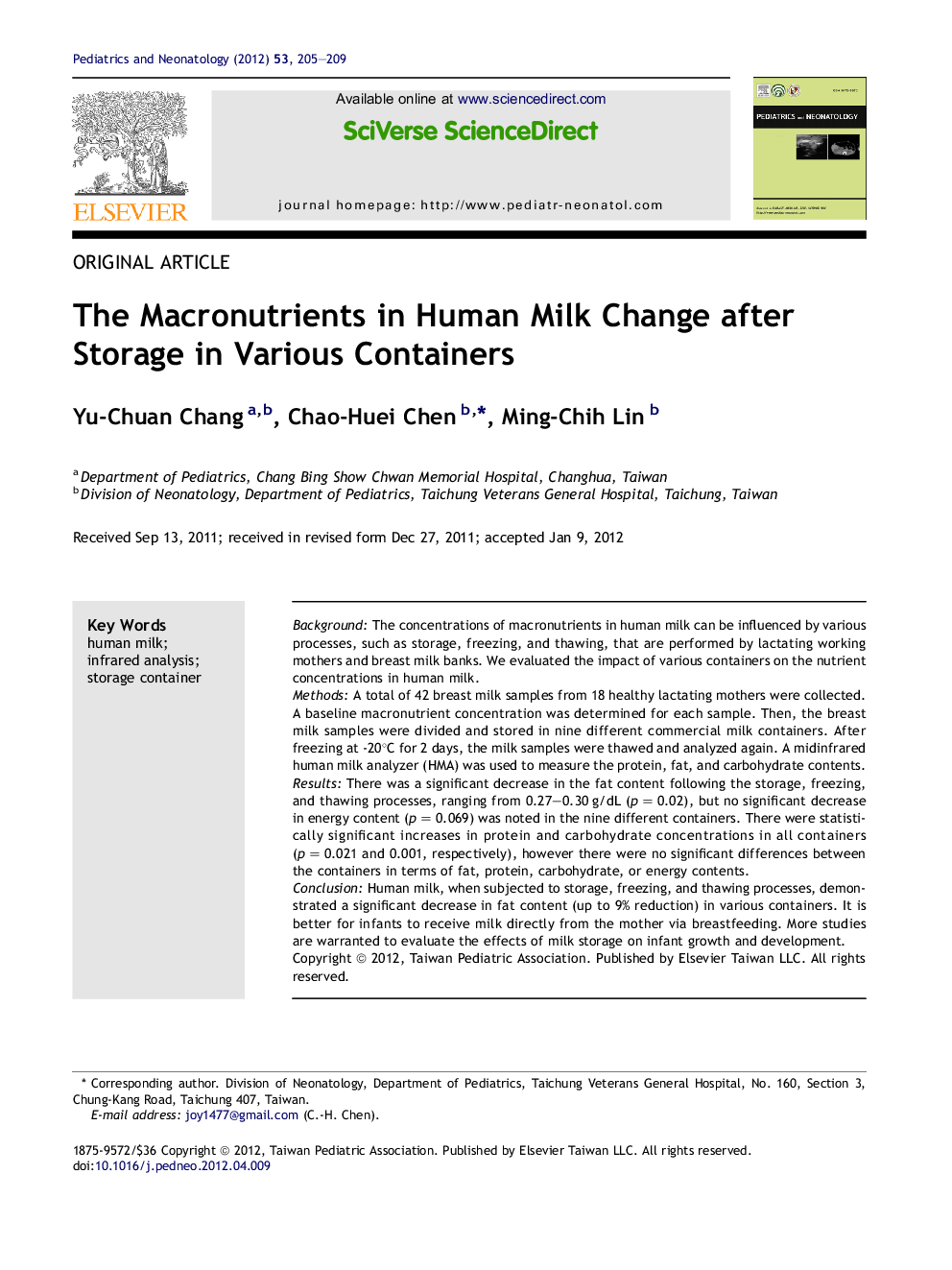| Article ID | Journal | Published Year | Pages | File Type |
|---|---|---|---|---|
| 4175293 | Pediatrics & Neonatology | 2012 | 5 Pages |
BackgroundThe concentrations of macronutrients in human milk can be influenced by various processes, such as storage, freezing, and thawing, that are performed by lactating working mothers and breast milk banks. We evaluated the impact of various containers on the nutrient concentrations in human milk.MethodsA total of 42 breast milk samples from 18 healthy lactating mothers were collected. A baseline macronutrient concentration was determined for each sample. Then, the breast milk samples were divided and stored in nine different commercial milk containers. After freezing at -20°C for 2 days, the milk samples were thawed and analyzed again. A midinfrared human milk analyzer (HMA) was used to measure the protein, fat, and carbohydrate contents.ResultsThere was a significant decrease in the fat content following the storage, freezing, and thawing processes, ranging from 0.27–0.30 g/dL (p = 0.02), but no significant decrease in energy content (p = 0.069) was noted in the nine different containers. There were statistically significant increases in protein and carbohydrate concentrations in all containers (p = 0.021 and 0.001, respectively), however there were no significant differences between the containers in terms of fat, protein, carbohydrate, or energy contents.ConclusionHuman milk, when subjected to storage, freezing, and thawing processes, demonstrated a significant decrease in fat content (up to 9% reduction) in various containers. It is better for infants to receive milk directly from the mother via breastfeeding. More studies are warranted to evaluate the effects of milk storage on infant growth and development.
